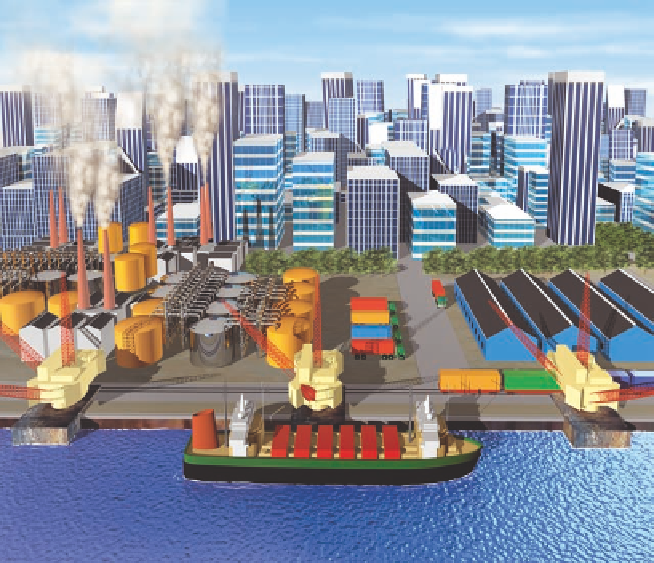Environmental Engineering Reference
In-Depth Information
ward (Figure 7-16) , they destroy rural cropland, fertile
soil, forests, wetlands, and wildlife habitats. At the
same time, most provide little of the food they use.
From an environmental standpoint, urban areas are
somewhat like gigantic vacuum cleaners, sucking up
much of the world's matter, energy, and living re-
sources and spewing out pollution, wastes, and heat.
As a consequence, they have large ecological foot-
prints that extend far beyond their boundaries. If you
live in a city, you can calculate its ecological footprint
by going to the website
www.redefiningprogress.org/
.
Also, see the Guest Essay on this topic by Michael Cain
on this chapter's website.
In urban areas, most trees, shrubs, or other plants
are destroyed to make way for buildings, roads, and
parking lots. As a result, most cities do not benefit
from vegetation that might otherwise absorb air pollu-
tants, give off oxygen, help to cool the air through
transpiration, provide shade, reduce soil erosion, muf-
fle noise, provide wildlife habitats, and give aesthetic
pleasure. As one observer remarked, “Most cities are
places where they cut down most of the trees and then
name the streets after them.”
As cities grow and their water demands increase,
expensive reservoirs and canals must be built and
deeper wells drilled. This activity can deprive rural
and wild areas of surface water and deplete ground-
water faster than it is replenished.
Flooding also tends to be greater in central cities
and their suburbs, sometimes because they are often
built on floodplain areas or along low-lying coastal ar-
eas subject to natural flooding. Covering land with
buildings, asphalt, and concrete can also cause precipi-
tation to run off quickly and overload storm drains. In
addition, urban development and sprawl often de-
stroys or degrades wetlands that act as natural sponges
to help absorb excess water. Many of the world's
largest cities face another threat: They are located in
coastal areas (Figure 7-13) that could be flooded some-
time in this century if sea levels rise as projected due to
global warming.
Because of their high population densities and
high resource consumption, urban dwellers produce
most of the world's air pollution, water pollution, and
solid and hazardous wastes. Pollutant levels in urban
areas are generally higher than in rural areas because
pollution is produced in a smaller area and cannot be
dispersed and diluted as readily as pollution produced
in rural areas. In addition, high population densities in
urban areas can increase the spread of
infectious diseases
Inputs
Outputs
Energy
Solid wastes
Waste heat
Food
Air pollutants
Water
Water pollutants
Raw
materials
Greenhouse gases
Manufactured goods
Manufactured
goods
Noise
Money
Wealth
Information
Ideas
Figure 7-18
Natural capital degradation:
urban areas are rarely sustainable systems. The typical city
depends on large nonurban areas for huge inputs of matter and energy resources and for large outputs of
waste matter and heat. According to an analysis by Mathis Wackernagel and William Rees, an area 58 times
as large as that of London is needed to supply its residents with resources. They estimate that meeting the
needs of all the world's people at the same rate of resource use as that of London would take at least three
more earths.




